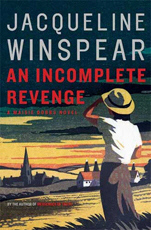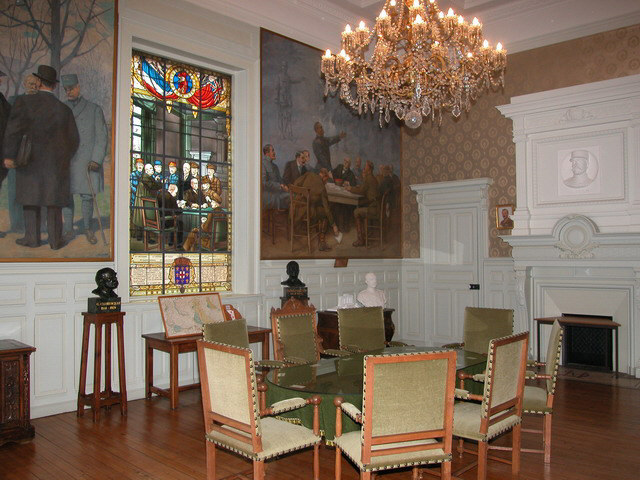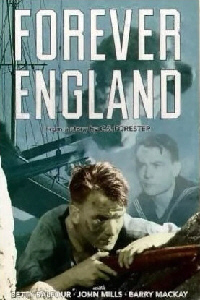
TRENCH REPORT: Our policy at the Trip-Wire is to acknowledge our goofs, and last month we made a big one. In my tribute to the late George MacDonald Fraser focusing on his Flashman series, I completely neglected his classic WWII memoir, Quartered Safe Out Here, covering his service in General Slim's 14th Army in the CBI Theater. Trip-Wire reader and distinguished historian E.M. "Mac" Coffmann wrote to remind me, "Fraser's WWII memoir is the best enlisted man's memoir to come out of that war."
Notwithstanding my omission, it was great to hear from all you Flashman fans out there, as well as the happy readers of Sewell Tyng's Campaign of the Marne that I pitched a few months ago. MH
This Month's Internet Feature
Everything You Wanted To Know About the French 75
Great Introduction from an Artillery Modeler
Wonder Weapon of the Great War
History of the 113th U.S. Field Artillery [Fired 75s]
Dreyfus and the French 75
French 75 Cocktail Invented by Ace Raoul Lufberry
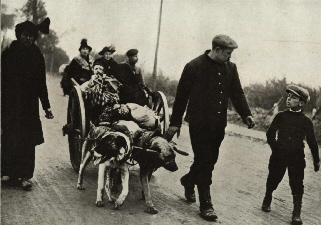
Belgian Refugees, 1914
New at Our Own & Our Friends' Great War Websites
Click on Title or Icon to Access
|
At Great War Society Sites
At the WFA-USA
|
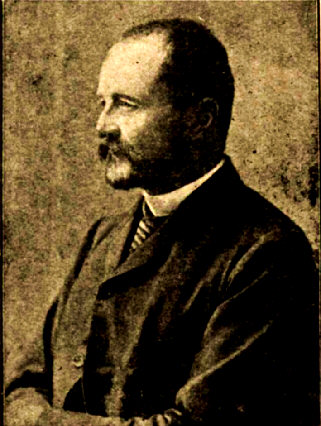
Count Stephen Tisza
Hungarian Premier, 1913-17: First opposed war with Serbia but later approved it. Took a military command on the Italian Front when his government fell and in 1918 was assassinated in Budapest by soldiers blaming him for the war.

Question: When did the Ottoman Empire become the "Sick Man of Europe"?
In January 1853, Tsar Nicholas I, 'sweating violently' from a high fever and the gout, had risen from his sickbed to meet Sir Hamilton Seymour, the British minister in St. Petersburg. Their conversation turned inevitably to the Tsar's main preoccupation. Nicholas was convinced that the Ottoman empire was on the point of imminent collapse. He told Seymour, 'we have a sick man on our hands, a man who is seriously ill; it will. . .be a great misfortune if he escapes us one of these days, especially before all the arrangements are made'.From Andrew Wheatcroft's The Ottomans
|
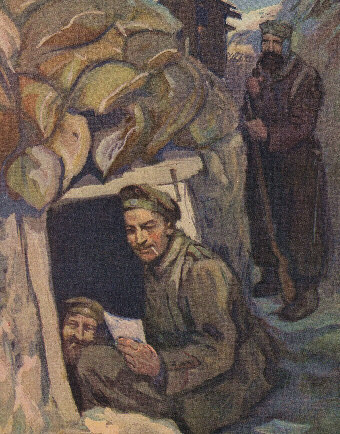
German Soldiers, Western Front --
Detail from Magazine Cover
Jugend, By Illustrator Otto Furchtner, 1916
GREAT WAR 2008 EVENT CALENDAR
|
|
|
WFA-Pacific Coast Branch General Mtg &Seminar
Canadian Scottish Armory, Victoria, BC
March 7-9, 2008 (information)
|
WFA-USA National Seminar
Carlisle Barracks, PA
America's Great War -
America's Great Warriors
September 12-14 2008 (information)
|
Western Front Association
U.S. Branch Chapter Meetings
Check for Your Region
Regularly Updated (details)
|
Great War Society Monthly Chapter Meetings
Berkeley, San Francisco and Palo Alto, CA
Regularly Updated (details)
|
Send additions/corrections:
Email Response
|

Memorable Event
|
Operation Michael --
The First Ludendorff Offensive
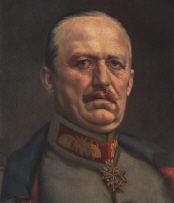
Quartermaster General
Erich von Ludendorff
March 21, 1918
Click on Image To Learn More
|
|
Our favorite World War I mystery novelist, Jackie Winspear, has a new work out featuring that superb sleuth, former military nurse, the amazing Maisie Dobbs. In An Incomplete Revenge Maisie investigates the long-lasting impact of the Great War's Zeppelin raids on England. (order)
British War Records Now Available On-Line: Astonishing as it sounds, 5.5 million records of the members of the British Army who served in World War I can now be accessed on-line at www.ancestry.co.uk (link). The bad news - this is a subscription service and you will be asked to "enlist" before accessing any records.
The Canadian-produced Passchendaele feature film we have mentioned in earlier issues will be released, November 11 2008.

You know my system, I stick a bit of plaster here, then another there, then another there. The Boche doesn't advance so fast--hardly advances at all. I stick another bit there, and the Boche is stopped. You can always stop the Boche. Ferdinand Foch, March 26, 1918
Just before he was named Generalissimo
|
Did you have a relative in the 78th "Lightning" Division of the AEF? Margaret Haas, whose dad was in the outfit, would like to hear from you about forming a group to exchange information. (email)
|
|
Conference Room, Hôtel de Ville, Doullens, France
Ferdinand Foch Named Generalissimo Here, March 26, 1918
|
|
|
|
Page Two
|
|
|
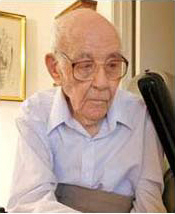
Harry Landis |
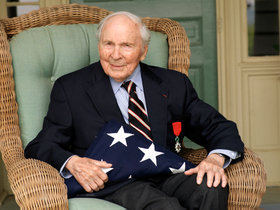
Frank Buckles |
Harry Richard Landis, a U.S. Army veteran of the First World War, died Feb. 4 at age 108.
(commentary)
Landis' death leaves Frank Buckles, 107, of Charles Town, WV, as the last known survivor of the 4.7 million American men and women who put on a uniform from 1917 to 1918 to wage what the nation then called the War to End All Wars. (story and photo)
|

|
From the Scrapbook
By Christina Holstein
|
Christina has been very busy, so this month we are presenting an assortment of some our favorite images from her.
 |
A. Color and Honor Guards, 90th Anniversary of the Battle of the Marne - September 2004 |
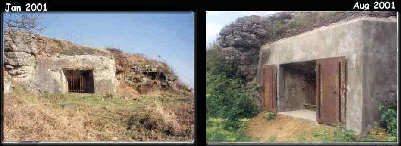 |
B. The Sort of Mindless Restoration Work Christina Detests: Bourges Casement at Verdun Patched With Concrete |
 |
C. Christina (far right) Describes the Parnard Casement at Fort Souville to Our 2007 Battlefield Tour Group [The Decapitated Party in the Yellow Slicker is Your Editor] |
|

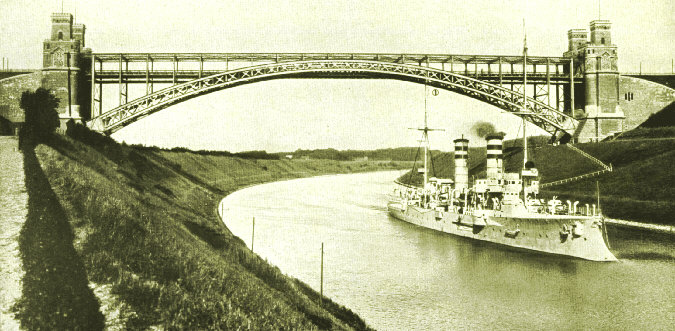
German Light Cruiser Urfona (2,700 tons) Passing Through the Kaiser Wilhelm Canal (Probably Prewar)
Click Here to Visit War in a Different Light
|
| A Great War Sequel: Edmund Lilly's Second War
|
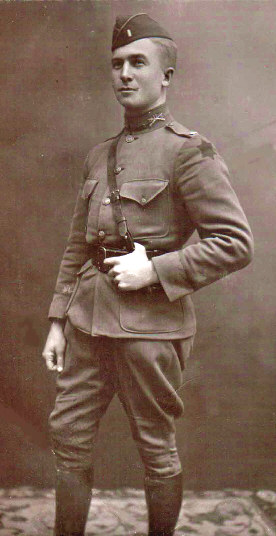
Lt. Edmund Lilly, 17th MG Battalion |
Edmund J. "Tad" Lilly was born in North Carolina and graduated from the University of North Carolina at Chapel Hill in 1915. In 1917, he received a commission in the regular Army and was subsequently assigned to the 17th Machine Gun Battalion of the 6th Division of the AEF. With the 6th Division, he spent 43 days in the line, mostly in the Vosges Mountains, and was deploying in the Argonne sector when the Armistice came. His battalion commander was Major James Van Fleet, who would become one of the most respected Generals in American history. Lilly became an expert on the Browning M1917 and swore to his dying day (1978) that he believed he could still assemble/disassemble one blindfolded. He decided to stay in the Army and make it his career after the Armistice.
In 1941 he was sent to Manila in the Philippines to serve in the U.S. Army's Philippine Division. He became the commander of the 57th Philippine Scout Regiment. The unit served on Bataan during the Japanese invasion. He became a POW in April 1942 when the Americans surrendered to the Japanese. For the next 40 months he was in various Japanese POW camps, surviving the Bataan Death March and internment in various camps throughout Asia, Formosa (Taiwan) and China. To keep his sanity, he maintained a diary in tiny notebooks. In addition to the diary he wrote down poems, songs, recipes, rules for Bridge and everything he could remember. He was liberated in Mukden, China in September, 1945. After his release from the camp, he spent six months in hospital and eventually returned to active duty. He retired as a Colonel (Infantry) in 1954 (Ft. Sam Houston) and passed away in November 1978, in Fayetteville, NC. Excerpts from Colonel Lilly's diary can be read at the Combined Arms Research Library website. (link)Contributed by SFC Ralph Koch, Grandson
|
|

|
1918 on The Western Front
By Tony Noyes
March
Operation Michael
|
The first of Ludendorff's blows was Operation Michael against Fifth Army, commanded by Hubert Gough. The division had been shifted southward after its depletion in the opening of the Battle of Passchendaele the previous summer. It was hit after a whirlwind bombardment at dawn on March 21st in thick fog. Gough had tried to build a defence in depth, but the fog, which dissipated during the morning, produced excellent cover for the fast moving storm troops, and in many cases they appeared out of the fog BEHIND the British troops who were out of sight of their companions. Consequently, many units surrendered in quantity, and Gough's line was severely dented to a maximum depth of some thirty-five miles.
Despite the retreat, the line never quite broke, and the attack ran out of energy. The Allies responded by reorganizing under the supreme command of Ferdinand Foch. Third Army to the north counterattacked, and French reinforcements helped buttress the southern shoulder of the salient. A new line held when the assault ceased on April 5th. It had cost the Allies and the German Army, some 250,000 casualties each, but the Germans had failed to take decisive, war-winning territory and now had to garrison an extended perimeter.
|
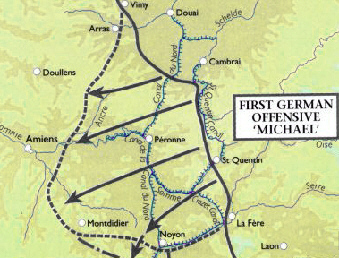
The next major German assault was due to strike on April 9th in Flanders.
Gough was sent home and then spent years defending his actions during these momentous days and also his good name. In my personal opinion he was made a scapegoat by more senior officers and also Lloyd George, the Prime Minister. The background and details of the first day's battle is well documented in The Kaiser's Battle by Martin Middlebrook. Gough outlived most of his critics and contemporaries and died in 1963.
|
|
If you are travelling to Europe and would like to visit these fields of memory for a detailed tour, please contact experienced guides Tony Noyes or Christina Holstein at Verdun Tours
|
|
|
Subscribe to Our New On-Line Magazine
|

|
|
|
Page Three
|
 |
Battles East: A History of the Eastern Front in the First World War, G. Irving Root
Reviewed by Len Shurtleff
|
This is a survey history of the vast Eastern front, extending for nearly 1200 miles from the Baltic to the Black Sea across the Polish plains through the Pripet Marshes, the oil fields of Silesia, the Carpathian Mountains and the Iron Gates of the Danube and the Romanian Dobrudja. Nearly all the combatants on both sides were represented here: Russia, Germany, Austria-Hungary, Rumania, Bulgaria and Turkey. Even the British and French had limited land and naval forces engaged by the end of the war.
Huge armies grappled in the east. The Germans alone had as many as two million men engaged at the height of the fighting, suffering over a million casualties over four years. Austria-Hungary had over forty-four divisions, half her army, deployed against Russia, which, in turn, deployed nearly half of her 294 divisions against the Germans and Austro-Hungarians. Casualty figures for Russia are unreliable but go as high as ten million military and civilian dead. Civilian losses, particularly among the hundreds of thousands of refugees (many of them Poles, Lithuanians or Ukrainians) displaced in the deep Russian retreat of 1915, are impossible to determine.
The author starts his survey with a review of the strategic position of the protagonists in 1914, moving through the overwhelming German 1914 victories at Tannenberg and the Masurian Lakes, the 1915 battles in Galicia and the Carpathians, the Brusilov Offensive and the defeat of Rumania in 1916, the disintegration of the Czarist army and government in 1917, to the post-1918 battles between the Red Army and the newly independent Polish state, the Rumanian invasion of Hungary and the actions of German Frei Korps, in the Silesian Plebiscite War of 1921. Also covered in useful detail are command rivalries within the Imperial German and Russian Armies and between the German and Austro-Hungarian commands, as well as the various treaties (Brest-Litovsk and Bucharest) ending the conflict.
In all, this is a valuable addition to the slim library of WWI Eastern Front histories* and well worth reading. Weaknesses include the maps (which though plentiful and detailed are monochromatic and hard to decipher) and exclusive reliance on secondary sources. Battles East: A History of the Eastern Front in the First World War, G. Irving Root, Publish America, 2007, 387 pages, bibliography, maps, ISBN 1 4241 6800 7, $24.95 paperback. Order from (link).
*For those interested in further reading:
The Eastern Front, 1914-1917, Norman Stone, Simon & Schuster, 1975
Handcuffed to a Corpse: German Intervention in the Balkans and on the Galician Front, 1914-1917,
Michael P. Kihntoph, White Mane, 2002
|
World War I Headlines
in the
21st Century
|
|
2008 World War I Film Festival
at the 2008 Great War Society
Annual Seminar
By Andrew Melomet
It's been a while since the last Great War Society National Seminar, three years in fact, but once again I'm putting together the film festival that will run concurrently with the lectures as well as in the evenings. The dates are April 11-13 for the Fifteenth Annual Seminar, and the overall topic is World War I in the Air and Sea. Here's what you can expect when you attend.
The daily programming will total approximately twenty hours of feature films and documentaries on naval and air warfare. Some not commonly available documentaries and archival footage will be shown. There'll be episodes from "The Century of Warfare", "The Century of Flight" and documentaries from the Canadian Film Board. Topics will include U-boats, the Lusitania, the Battle of Jutland, naval codes, the Red Baron, airships and the Lafayette Escadrille. The feature films tentatively scheduled include Hell Below (1933), Ace of Aces (1933), Aces High (1976) and Forever England (1935). If there's time Attack of the Hawkmen, a "Young Indiana Jones" adventure that features the Red Baron and Anthony Fokker will be included.
Our evening screenings will be on "The Fantastic Cinema of the Air and Naval War of World War I." Audience members will be confronted with German super weapons, time travelers, ghosts and dinosaurs!
Friday night we'll be taking to the air for Biggles: Adventures In Time (1986), based on the popular "Biggles" series by "Captain" W.E. Johns. This film is not a classic but is certainly entertaining--recounting a mission to destroy a German secret super weapon that runs into interference from an unintentional time traveler. Following Biggles is The Last Flight, a "Twilight Zone" episode from 1960 written by Richard Matheson. The story is that of a World War I British fighter pilot who flies away from a dogfight in 1917 and lands at a modern American air base in 1959. He must decide whether or not to return to the past and his possible death in order to maintain the existing future. The vintage Nieuport in the episode was flown by legendary stunt pilot Frank Tallman. We'll close our program that night with a rather bizarre short subject, So Quiet On The Canine Front, a 1931 version of All Quiet On The Western Front but featuring an all-dog cast.
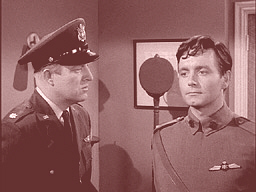
You're in the Twighlight Zone |
After the banquet on Saturday we dive beneath the sea to face dinosaurs and ghosts! First up is The Land That Time Forgot (1975) based on the 1918 novel by Edgar Rice Burroughs. The crew of a German U-boat and the survivors of a torpedoed freighter team up to survive in a lost land inhabited by dinosaurs and cavemen. The screenplay is by the noted science fiction/fantasy writer Michael Moorcock. Then it's back to the future for a 1966 episode of "Voyage To The Bottom Of The Sea". In The Phantom Strikes, the futuristic nuclear-powered submarine Seaview is menaced by the hulk of a World War I U-boat and its supernatural one-man crew, the ghost of Captain Krueger. Can the crew of the Seaview survive when the Phantom strikes? Saturday night attendees will find out! And to close the evening, there's another unusual short, War Babies (1932). A four-year-old Shirley Temple headlines an all-diaper-clad cast in a one-reel version of What Price Glory? produced as one of the "Baby Burlesk" comedy series.

The Seaview Confronts Phantom
Andrew Melomet, Proprietor of Andy's Nickelodeon, will answer your Great War film or video inquiry. He is also soliciting your recommendations for the WWI Filmography he is compiling for our readers. Just click HERE.
|
|
| The following are thanked for their contributions to this issue of the Trip-Wire: Len Shurtleff, Tom Jones, Diane Rooney, Ralph Koch, Tom Jones, Steve Miller, Tony Langley, Christina Holstein, Tony Noyes, Andrew Melomet, Kimball Worcester and my pal, Maggie Haas. Until next month, your editor, Mike Hanlon. |
SUBSCRIBE TO THE TRIP-WIRE
(Or send it to a friend)
(Or send us a comment on the TRIP-WIRE)
CLICK HERE TO CONTACT US VIA EMAIL |
For further information on the events of 1914-1918
and membership information visit the Directory Pages of:
|
| | |


